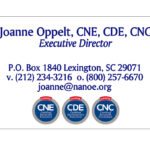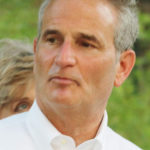
Looking For Your Next Job? Get Your Nonprofit Credentials First!
December 21, 2024
Picking Your Priorities: 4 Key Tests Before Grant Writing
December 30, 2024Major Gifts…Your 2025 Mandate!

Major Gifts…Your 2025 Mandate is Jim Eskin’s take on what nonprofit leaders will do in 2025 to increase charitable revenues. Here’s what this fundraising veteran has to share:
Recently I was leading a discussion of my new book, How To Score Your First or Next Million-Dollar Gift, and a highly respected non-profit leader said he would rather raise $1 from a million donors than receive a single million-dollar gift.
I was shocked and nearly fell out of my chair. As diplomatically as possible I corrected his alarmingly misguided thinking.
 After further reflection, this incident reinforced my “raison d’etre” as a fundraising trainer/consultant. Though not as blatantly as in this case, far too many passionate and devoted professional and volunteer non-profit leaders don’t get it. And the biggest losers are the beneficiaries of their noble causes.
After further reflection, this incident reinforced my “raison d’etre” as a fundraising trainer/consultant. Though not as blatantly as in this case, far too many passionate and devoted professional and volunteer non-profit leaders don’t get it. And the biggest losers are the beneficiaries of their noble causes.
There are many ways of making this indisputable point: To paraphrase a song from the musical “Cabaret,” “money makes the philanthropic world go ’round.” Or I can borrow the mantras of two of my favorite mentors and philanthropic forces of nature, Jimmy LaRose, co-founder of NANOE (National Association of Nonprofit Organizations & Executives), “Money is oxygen — without It charities can’t breathe,” and Marv Leroy, President & Founder, Institute for Philanthropic Excellence, “More money = more mission.”
They might have different platforms and personalities, but they are both right on target. As I fervently believe along with them, money is not an end, but merely a means to an end. That destination being a safer, healthier, stronger and more just world in which gifts of time, talent and treasure are generously made to touch, improve and save more lives, especially helping those who are struggling.
There can and should be healthy debate on principles, strategies and best practices, but the dominant role of major gifts is sacrosanct. Let’s dig deeper into this subject and why its rationale grows more and more compelling.
Sheer Numbers
The case for major gifts is rooted in the 80-20 rule, also known as the Pareto Principle, asserting that 80% of outcomes (or outputs) result from 20% of all causes (or inputs) for any given event. It was introduced in 1906 by Italian economist Vilfredo Pareto who discovered that 20% of the pea pods in his garden were responsible for 80% of the peas. He expanded this principle to macroeconomics by showing that 80% of the wealth in Italy was owned by 20% of the population.
It fit American philanthropy until the last decade. Now the split is much more like 90-10 with 90% of America’s vast $557 billion philanthropic enterprise coming from just 10% of the donor base. Like it or not, the trend is only accelerating. Latest Fundraising Effectiveness Project data indicates that increases in giving totals is unfortunately accompanied by declines in overall donor participation. To wit: Approximately two thirds of American households donated to charity in 2000, and that has precipitously dropped to less than half.
One trend has remained remarkably stable. For the past six decades, about two-thirds of total giving has been made by individuals. While we cherish gifts and grants from corporations and foundations, my father taught me to go fishing where the fish are biting, and that’s in the pond of gifts from individuals. Individuals also tend to make up their minds much more quickly than corporations and foundations.
Efficiency
Major gifts provide a huge edge on return on investment. They blow away so-called special events in which typically half of the money raised goes to cover expenses.
Fueling major gift initiatives is relatively low cost. There might be entertainment and meals, but by far the biggest investment is the time of non-profit leaders to nurture, maintain and grow friendships with donor prospects. Note the use of the word “friendship” over “relationship.” I once heard a relationship defined as something you have until something better comes along. Major gifts are much more than transactions. They are the culmination of taking the time to genuinely earn trust built on shared values, priorities and needs. The goal is a lifetime association characterized by a win-win partnership between non-profit and donor that grows closer and closer over time.
Small Is Beautiful
Definitions of major gifts vary from organization to organization and even evolve within the same organization during its history. Essentially, it’s the inner circle of larger donors that can truly move the needle in empowering non-profits to champion their missions.
The overwhelming majority of America’s 1.5 million non-profits have annual budgets of less than $1 million. Smaller organizations can actually enjoy advantages. Major gifts are much more intimate. To each of them, gifts that would be considered modest in nationally prestigious organizations are impactful and transformational. Donors making gifts between $50,000 and $100,000 can and should be treated like heroes.
Then there’s my favorite turf — first million-dollar gifts. Ivy League institutions have more seven-figure donors than they can count, but there can be only one first million-dollar gift that will forever stand out in a non-profit’s history.
It Starts With A Dream
When the Rev. Martin Luther King Jr. challenged America in 1963 to get on the right side of history, he didn’t proclaim, “I have a strategic plan.” Indeed, dreams are at the very heart of non-profits energizing, motivating and inspiring donors to make personally significant gifts of time, talent and treasure.
Never forget how fiercely competitive the philanthropic marketplace is. Donors are forced to make excruciatingly difficult choices not between the good and the bad but between the good and the good. To win major gifts, non-profits must work hard and work smart to formulate projects and appeals that stand out and distinguish themselves from all the other good causes.
It Takes A Village
Non-profits that depend solely on development staff to obtain gifts are doomed to fall far short of their potential. All professional and volunteer team members can contribute mightily to success without ever having to ask for gifts themselves. They can identify donors from their personal, professional and civic networks, break the ice, spread key messages and stories at every turn and help express gratitude. When the time is right, staff and volunteers comfortable with solicitation can step in and make the ask.
Most people will say that they don’t have access to major gift donors. The Six Degrees of Separation reminds us that everyone on the planet is separated by no more than six personal relationships, and in many communities it’s more like two degrees of separation. You’ll be amazed by what huge doors of opportunity can be unlocked by members of your non-profit family.
This is not just about a hunt for high wealth individuals. Practitioners will consistently report that stretching major gifts are influenced more by passion for the mission than financial capacity.
Major gifts — including seven-figures — are earned all the time. After working with numerous non-profits of all different sizes, missions and parts of the country, the chief common denominator is faith. The non-profit professional and volunteer family believe deeply in the nobility of their mission, in one another and the generosity of the men and women surrounding them and their potential to live up to the spirit of what Abraham Lincoln called the “better angels of our nature.”
The new year is a time for making resolutions. Celebrate gifts of all amounts, but make sure an unstinting commitment to major gifts is high on your list. Major gifts are the surest — if not only — path to financial viability and sustainability and rewarding staff, volunteers and especially beneficiaries of the resources they so richly deserve.
 About the Author
About the Author
After a successful career leading advancement for three institutions of higher education, Jim Eskin’s consulting practice, Eskin Fundraising Training launched in 2018, builds on the success of his more than 250 fundraising workshops, webinars, webcasts, podcasts and board sessions, and provides the training, coaching and support services that non-profits need to compete for and secure major gifts. He has authored more than 150 guest columns that have appeared in daily newspapers, business journals and blogs across the country, and publishes Stratagems, a monthly e-newsletter exploring timely issues and trends in philanthropy. Sign up here for a free subscription. He is author of 10 Simple Fundraising Lessons, which can be purchased here and has released his second book, How To Score Your First or Next Million-Dollar Gift, that can be purchased here.
Jim Eskin, Founder
Eskin Fundraising Training
10410 Pelican Oak Drive
San Antonio, TX 78254-6727
Cell: 210.415.3748
E-Mail: [email protected]
www.eskinfundraisingtraining.com
The post Major Gifts…Your 2025 Mandate! appeared first on NANOE | Charity’s Official Website.
